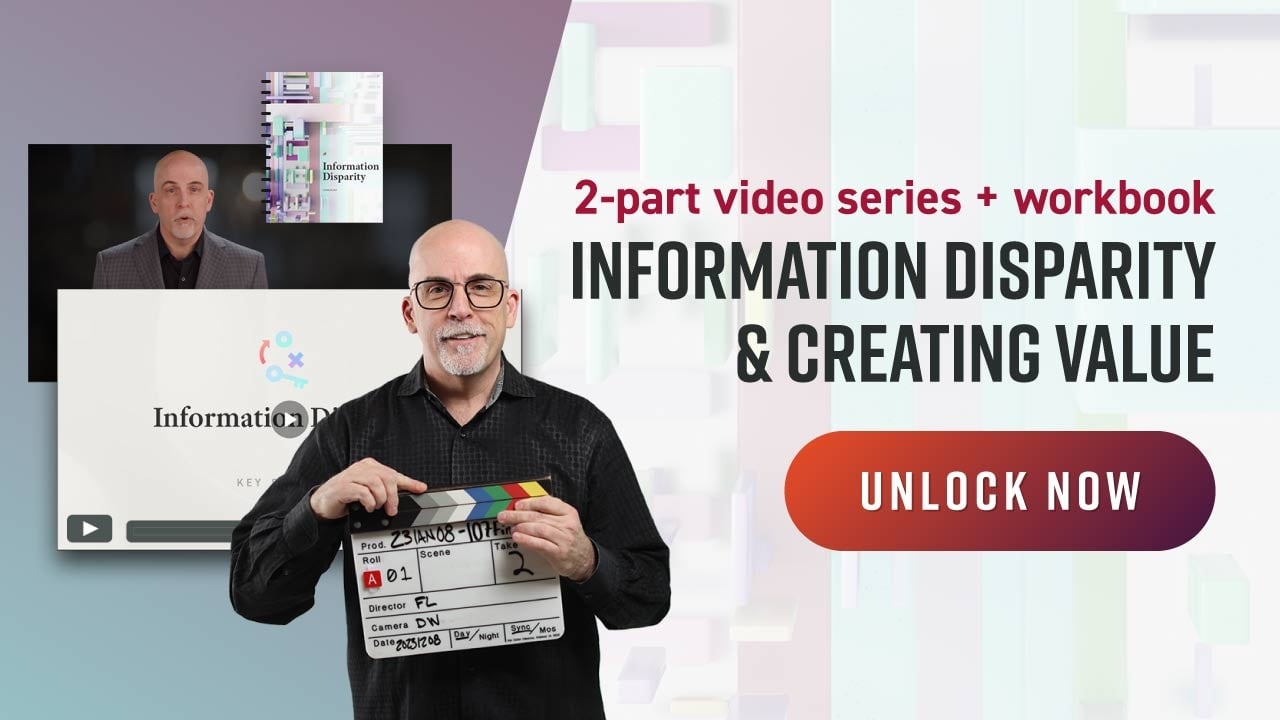Evolution from Spray-and-Pray to Ideal Customer Profile Targeting
In the last decade, sales organizations moved away from a spray-and-pray approach, adopting a strategy engineered to target their Ideal Customer Profile (ICP). As part of this change, sales organizations began personalizing their cold outreach emails, incorporating strategies such as acknowledging the contact’s role, identifying a trigger event or concern, offering a compliment, and addressing the client’s interests.
If one salesperson calling on a client personalized their email, it would be an anomaly. But when thousands of salespeople are using LinkedIn to personalize cold outreach emails, the resulting messages become commodities, making them fungible. Your contact recognizes they could swap the company name in your salesperson’s email with the name of any similar company.
It's important to know that your highly personalized email is sitting next to your competitor's, maybe at the top of the contact’s inbox or farther down, stuffed under all kinds of communications, most not worth the time to open, read, or respond. Many of the emails are deleted, and the outstanding personalization you provided is never seen.
The Detrimental Impact of Incorrect Personalization in Cold Emails
My name is Anthony Iannarino. When the email begins with Dear Ian, I am positive this person has no idea who I am, and getting my name wrong is a dead giveaway the person (or more likely the automation) is generating hundreds of emails that will soon find their way to wherever emails go when they die at the hand of the delete key.
Getting the name wrong tells the client about how you do things. How you do one thing is how you do everything. Your contact will push the delete key because you got their name wrong, but don’t worry; it would have been deleted even if you had gotten their name right.
The Ineffectiveness of Generic Compliments in Sales Outreach Strategies
The email I received started with a false compliment. It read, “We are impressed with your work with Iannarino.” My last name is Iannarino, and because it looks like the name of my company, the sender assumes that is what they should use. The salesperson who offers this incredibly vague compliment has no information about how “Iannarino” is doing.
Humans are tuned to notice when people are insincere. No one falls for this kind of fake compliment.
Misconceptions about Role and Title Recognition as Personalization
If you somehow believe that including a person’s role or title is personalization, you are mistaken. It's difficult to discern how noting their role is personalization when every one of your competitors is certain to acknowledge the contact’s title or their role as well. On LinkedIn, the line under my name reads “You will never win all the clients you want. You will win all the clients that want you.” When the automation uses this line as my title, it alerts me that there is no human effort, something that betrays the sender as not truly interested in anything more than pitching, well, everyone.
Leveraging Trigger Events for Effective Email Personalization Strategies
Every so often, events conspire to provide salespeople with the opportunity to personalize emails by mentioning something that is likely to cause a change. You can find trigger events by using a framework like PESTLE (political, economic, sociological, technological, legal, and environmental). The problem with including trigger events in your personalized cold outreach is that by the time you are aware of the event, so is everyone else. One of my companies participated in the CARES Act. For months after participating companies had already completed the process, other companies selling services to do this work continued to run ads and send emails.
Utilizing Social Proof to Enhance Cold Email Personalization Techniques
Another way to personalize your outreach is to prove that your company and your solution is awesome. Recently, I received an email that had three company names with testimonials, a testament to the salesperson’s company as a good and successful company with happy customers. Occasionally, the sales rep inserts a link as proof of their results. Most of the contacts who receive this social proof personalization will not need proof until the end of the sales conversation.
Trading Value: A Superior Strategy in B2B Sales Email Personalization
In The Lost Art of Closing: Winning the 10 Commitments That Drive Sales, you will find the Trading Value Rule, something that is taught in B2B sales training. The big idea about trading value is that you are offering the contacts at your prospective client something that is worth their time. This will differentiate you from your competitors and hundreds of salespeople who are continually sending personalized emails that create no value.
You would be better off using an insight-rich email with information that is helpful without asking for a meeting or anything else. Making deposits in what will be a future relationship will eventually allow you to acquire a meeting.
Addressing the Cold Outreach Crisis in Modern Sales Techniques
You may have noticed it is increasingly difficult to get a contact to answer your phone call. You may have also noticed that you send a great number of emails without ever getting returned. If one salesperson were to automate their cold outreach, it would not be a problem. If thousands of sales organizations automated their outreach, scraping the internet for something personal they can include in an email.
The future of cold outreach is looking bleak. We are going to have to do something better and more effective than sending personalized sales emails, as what we are doing now is not as effective as it once was.




.jpg?width=768&height=994&name=salescall-planner-ebook-v3-1-cover%20(1).jpg)
